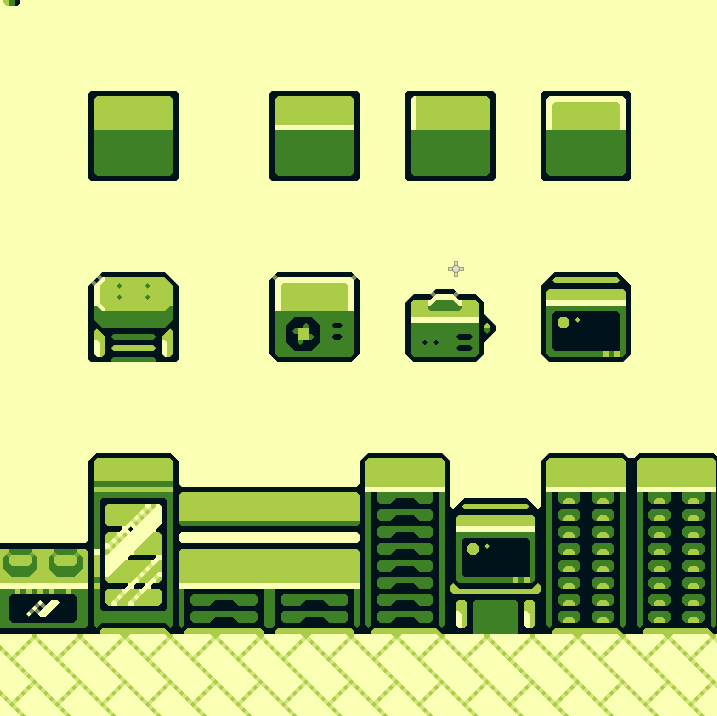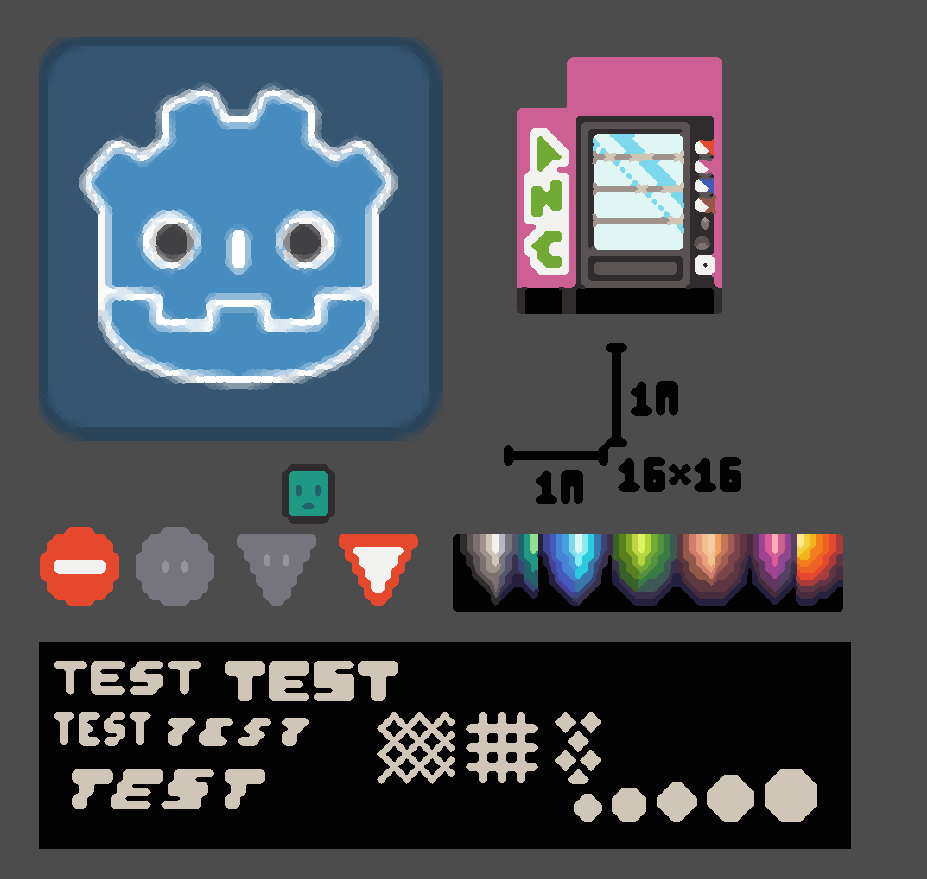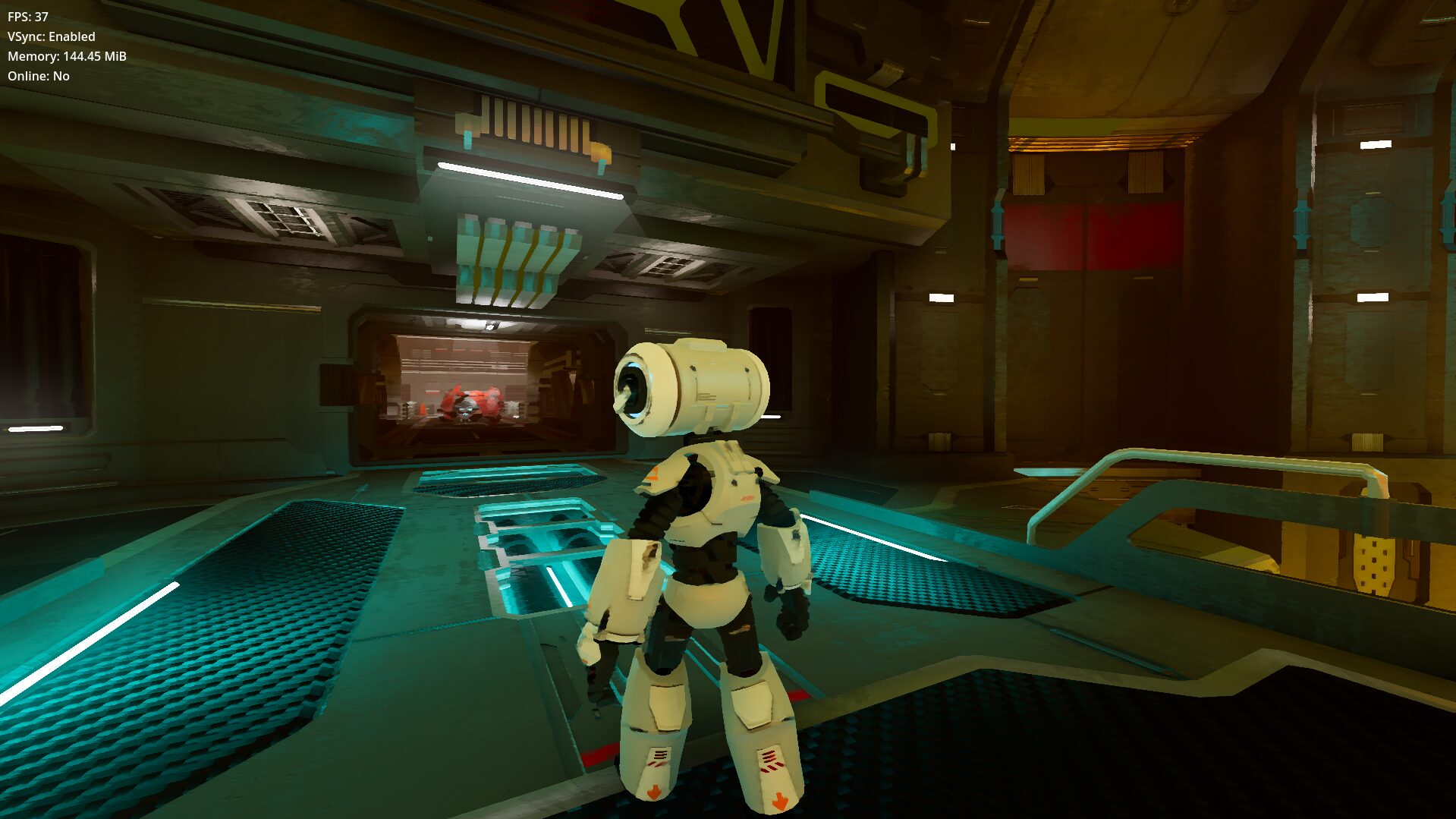Generalized Kuwahara
Postprocessing Kuwahara shader
Ported from Unity to Godot 4, orignal by Acerola
– Video by Acerola: This is the Kuwahara Filter
– Source code: https://github.com/GarrettGunnell/Post-Processing/tree/main/Assets/Kuwahara%20Filter
Shader code
shader_type canvas_item;
const int _N = 8;
uniform sampler2D SCREEN_TEXTURE: hint_screen_texture, filter_linear_mipmap, repeat_disable;
uniform int _KernelSize: hint_range(2, 20, 1) = 2;
uniform float _Hardness: hint_range(1.0f, 100.0f) = 8.0f;
uniform float _Sharpness: hint_range(1.0f, 18.0f) = 8.0f;
uniform float _ZeroCrossing: hint_range(0.01f, 2.0f) = 0.58f;
uniform float _Zeta: hint_range(0.01f, 3.0f) = 1.0f;
varying vec2 texelSize;
float gaussian(float sigma, float pos) {
return (1.0f / sqrt(2.0f * PI * sigma * sigma)) * exp(-(pos * pos) / (2.0f * sigma * sigma));
}
void vertex() {
texelSize = vec2(1.0 / vec2(textureSize(SCREEN_TEXTURE, 0)));
}
void fragment() {
vec4 m[8];
vec3 s[8];
int kernelRadius = _KernelSize / 2;
//float zeta = 2.0f / (kernelRadius);
float zeta = _Zeta;
float zeroCross = _ZeroCrossing;
float sinZeroCross = sin(zeroCross);
float eta = (zeta + cos(zeroCross)) / (sinZeroCross * sinZeroCross);
for (int k = 0; k < _N; ++k) {
m[k] = vec4(0.0f);
s[k] = vec3(0.0f);
}
for (int y = -kernelRadius; y <= kernelRadius; ++y) {
for (int x = -kernelRadius; x <= kernelRadius; ++x) {
vec2 v = vec2(float(x), float(y)) / float(kernelRadius);
vec3 c = texture(SCREEN_TEXTURE, UV + vec2(float(x), float(y)) * texelSize.xy).rgb;
c = clamp(c, 0.0f, 1.0f);
float sum = 0.0f;
float w[8];
float z, vxx, vyy;
/* Calculate Polynomial Weights */
vxx = zeta - eta * v.x * v.x;
vyy = zeta - eta * v.y * v.y;
z = max(0, v.y + vxx);
w[0] = z * z;
sum += w[0];
z = max(0, -v.x + vyy);
w[2] = z * z;
sum += w[2];
z = max(0, -v.y + vxx);
w[4] = z * z;
sum += w[4];
z = max(0, v.x + vyy);
w[6] = z * z;
sum += w[6];
v = sqrt(2.0f) / 2.0f * vec2(v.x - v.y, v.x + v.y);
vxx = zeta - eta * v.x * v.x;
vyy = zeta - eta * v.y * v.y;
z = max(0, v.y + vxx);
w[1] = z * z;
sum += w[1];
z = max(0, -v.x + vyy);
w[3] = z * z;
sum += w[3];
z = max(0, -v.y + vxx);
w[5] = z * z;
sum += w[5];
z = max(0, v.x + vyy);
w[7] = z * z;
sum += w[7];
float g = exp(-3.125f * dot(v,v)) / sum;
for (int k = 0; k < 8; ++k) {
float wk = w[k] * g;
m[k] += vec4(c * wk, wk);
s[k] += c * c * wk;
}
}
}
vec4 output = vec4(0.0f);
for (int k = 0; k < _N; ++k) {
m[k].rgb /= m[k].w;
s[k] = abs(s[k] / m[k].w - m[k].rgb * m[k].rgb);
float sigma2 = s[k].r + s[k].g + s[k].b;
float w = 1.0f / (1.0f + pow(_Hardness * 1000.0f * sigma2, 0.5f * _Sharpness));
output += vec4(m[k].rgb * w, w);
}
COLOR.rgb = clamp(output / output.w, 0.0f, 1.0f).rgb;
}










whats the setup in engine? I tried making my main camera a subviewport, rendering that subviewport to a texturerect, and then applying this shader to that texture rect but that doesnt seem to work 🙁
(you can find this option if you select the ColorRect and got to the 2DView, its the one left to the anchor)